
Aztec mythology is the body or collection of myths of the Aztec civilization of Central Mexico. The Aztecs were Nahuatl-speaking groups living in central Mexico and much of their mythology is similar to that of other Mesoamerican cultures. According to legend, the various groups who became the Aztecs arrived from the North into the Anahuac valley around Lake Texcoco. The location of this valley and lake of destination is clear – it is the heart of modern Mexico City – but little can be known with certainty about the origin of the Aztec. There are different accounts of their origin. In the myth, the ancestors of the Mexica/Aztec came from a place in the north called Aztlan, the last of seven nahuatlacas to make the journey southward, hence their name "Azteca." Other accounts cite their origin in Chicomoztoc, "the place of the seven caves", or at Tamoanchan.
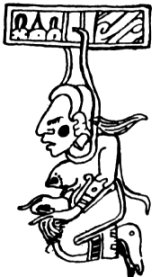
At the time of the Spanish conquest of Yucatán (1527–1546), Ix Tab or Ixtab was the indigenous Maya goddess of suicide by hanging. Playing the role of a psychopomp, she would accompany such suicides to heaven.

Ixchel or Ix Chel is the 16th-century name of the aged jaguar goddess of midwifery and medicine in ancient Maya culture.
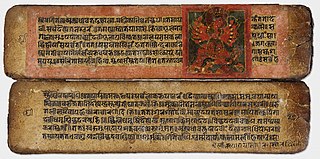
The Devi Mahatmya or Devi Mahatmyam is a Hindu philosophical text describing the Goddess, known as Mahadevi or Adishakti, as the supreme power and creator of the universe. It is part of the Mārkandeya Purāna.

Sati, also known as Dakshayani, is the Hindu goddess of marital felicity and longevity, and is worshipped as an aspect of the mother goddess Shakti. Sati was the first wife of Shiva, the other being Parvati, who was Sati's reincarnation after her death.

Glass Mask is a Japanese shōjo manga series written and illustrated by Suzue Miuchi, serialized in Hana to Yume from January 1976, and collected in 49 tankōbon volumes as of October 2012. The story has also been adapted into anime and a live-action television series. As of 2006, the collected volumes had sold 50 million copies in Japan, making it the second best-selling shōjo manga ever.
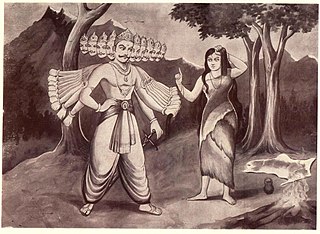
Vedavati is the previous birth of the goddess Sita in Hindu mythology. She is an avatar of the goddess of prosperity, Lakshmi.

The sky often has important religious significance. Many religions, both polytheistic and monotheistic, have deities associated with the sky.

A weather god or goddess, also frequently known as a storm god or goddess, is a deity in mythology associated with weather phenomena such as thunder, snow, lightning, rain, wind, storms, tornadoes, and hurricanes. Should they only be in charge of one feature of a storm, they will be called after that attribute, such as a rain god or a lightning/thunder god. This singular attribute might then be emphasized more than the generic, all-encompassing term "storm god", though with thunder/lightning gods, the two terms seem interchangeable. They feature commonly in polytheistic religions, especially in Proto-Indo-European ones.

Shakti in Hinduism, is the "Universal Power" that underlies and sustains all existence. Conceived as feminine in essence, Shakti refers to the personified energy or power of a male deity and, more specifically, is often identified as the consort of the god Shiva.
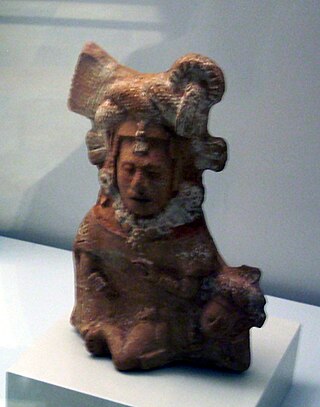
Goddess I is the Taube's Schellhas-Zimmermann letter designation for one of the most important Maya deities: a youthful woman to whom considerable parts of the post-Classic codices are dedicated, and who equally figures in Classic Period scenes. Based on her representation in codical almanacs, she is considered to represent vital functions of the fertile woman, and to preside over eroticism, human procreation, and marriage. Her aged form is associated with weaving. Goddess I could, perhaps, be seen as a terrestrial counterpart to the Maya moon goddess. In important respects, she corresponds to Xochiquetzal among the Aztecs, a deity with no apparent connection to the moon.

Awilix was a goddess of the Postclassic Kʼicheʼ Maya, who had a large kingdom in the highlands of Guatemala. She was the patron deity of the Nijaʼibʼ noble lineage at the Kʼicheʼ capital Qʼumarkaj, with a large temple in the city. Awilix was a Moon goddess and a goddess of night, although some studies refer to the deity as male. Awilix was probably derived from the Classic period lowland Maya moon goddess or from Cʼabawil Ix, the Moon goddess of the Chontal Maya.
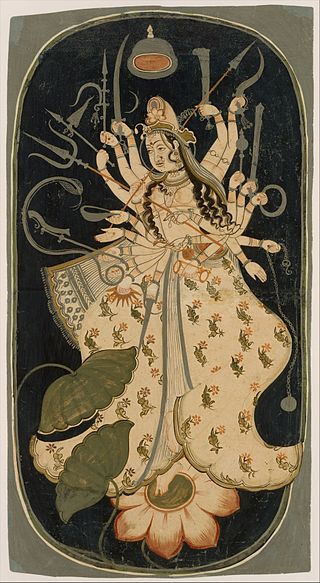
Mahadevi, also referred to as Adi Parashakti and Jagat Janani, is the supreme goddess in Hinduism. According to the goddess-centric sect Shaktism, all Hindu gods and goddesses are considered to be manifestations of this great goddess, who is considered as the Para Brahman or the ultimate reality.
Chac Chel is a powerful and ancient Mayan goddess of creation, destruction, childbirth, water, weaving and spinning, healing, and divining. She is half of the original Creator Couple, seen most often as the wife of Chaac, who is the pre-eminent god of lightning and rain, although she is occasionally paired with the Creator God Itzamna in the Popol Vuh, a recording of the myths of the highland Maya. This highlights her importance, as dualities such as male/female and husband/wife were extremely important to the Maya, and one cannot function without the other. Chac Chel is also called Goddess O by many Mayanists and she is the aged, grandmotherly counterpart to the young goddess of childbirth and weaving, Ix Chel. Most popular in the Late Classic and Postclassic Periods, she is most often depicted in scenes in the Dresden Codex and Madrid Codex. Depictions of her, and burial goods related to her, have also been found in Chichen Itza, the Balankanche Cave near Chichen Itza, Tulum, The Margarita Tomb in Copan, and in Yaxchilan.

Maya and the Three is an animated fantasy television miniseries created by Jorge R. Gutiérrez and produced by Tangent Animation.













